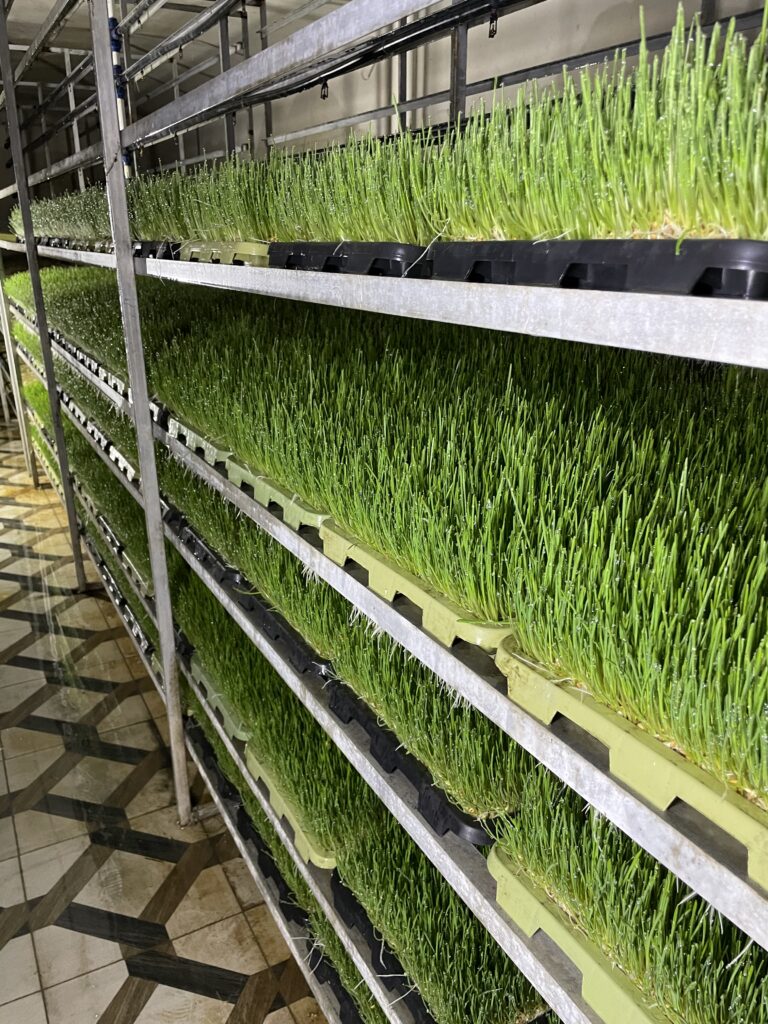Historically, grain sprouts have been used in traditional food, such as “sumalak”, which is prepared for Navruz at the beginning of spring. This tradition has been practiced for centuries across Central Asia. The same concept is applied in the production of hydroponic fodder, a concept not entirely new but with a fresh purpose.
Hydroponic fodder production offers a particularly valuable solution in Central Asia. The region has a long history of livestock farming, with a significant portion of the population relying on animals for their livelihoods. Moreover, Central Asia is known for its harsh winters, which can make traditional feed production difficult during the cold months. Hydroponic systems allow farmers a practical and efficient way to meet the high demand for animal feed year-round, ensuring a consistent food source for cattle and horses, even in the coldest months of winter. Hydroponics drastically reduces water usage compared to conventional farming methods, making it an environmentally responsible and practicable choice for arid regions.
The GIZ ECO ARAL project supports hydroponic green fodder production as livestock feed through trainings and innovative pilot projects in Urgench/Uzbekistan and Kyzylorda/Kazakhstan.



